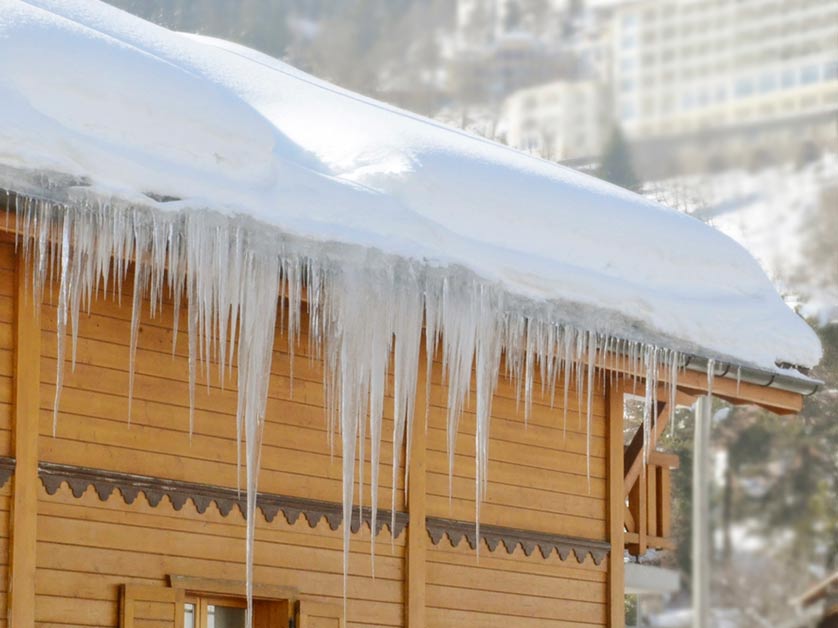As homeowners prepare for winter, they should be on the lookout for a common but hazardous winter phenomenon known as ice dams. Ice dams form along the edges of a roof under specific winter conditions and can cause significant damage to your home. In this blog post, we’ll explain what ice dams are, how they form, and why they are a cause for concern.

What Are Ice Dams?
An ice dam is a ridge of ice that forms at the edge of a roof and prevents melting snow from draining off the roof. The water that backs up behind the dam can leak into a home and cause damage to walls, ceilings, insulation, and other areas.
How Do Ice Dams Form?
Ice dams occur after a heavy snowfall when the attic’s temperature is higher than the freezing point, causing the snow on the roof to melt. The melted snow flows down the roof until it reaches the colder eaves, where it refreezes into ice. Over time, this cycle causes the formation of an ice dam. The primary factors contributing to the formation include poor attic insulation and ventilation, which lead to uneven temperatures on the roof’s surface.
Why Should Homeowners Be Concerned?
The presence of ice dams on your roof can lead to several significant problems:
-
Water Damage – Ice dams can cause water to back up and leak into your home, leading to damaged ceilings, walls, insulation, and flooring.
-
Structural Damage – In severe cases, the weight of the ice dam and the water can damage your roof structure and the home’s interior.
-
Mold and Mildew Growth – The moisture entering the home from ice dams creates the perfect conditions for mold and mildew growth, which can lead to health issues for the home’s occupants.
Preventing Ice Dams
Preventing ice dams is much more cost-effective than dealing with the damage they cause. You can take several steps to prevent ice dam formations:
-
Improve Attic Insulation and Ventilation – Proper insulation and ventilation of the attic can minimize the heat loss that contributes to ice dam formation.
-
Seal Air Leaks – Sealing leaks between your heated living space and the attic can reduce the amount of warm air that reaches your roof.
-
Install Heat Cables – Installing heat cables along the edge of your roof can help prevent ice from forming.
Dealing with Existing Ice Dams
If an ice dam has already formed on your roof, it’s best to handle it with caution. Trying to remove the ice yourself can damage your roof and potentially lead to personal injury. Professional removal services are equipped to safely remove ice dams without causing damage to your property.
At Vision Construction Co. LLC, we understand the challenges homeowners face due to ice dams. Our team of experts is ready to assist you with prevention strategies, assessment, and professional removal of any existing ice dams. Reach out to us at (816) 743-4156 or fill out our online form to schedule an appointment.
